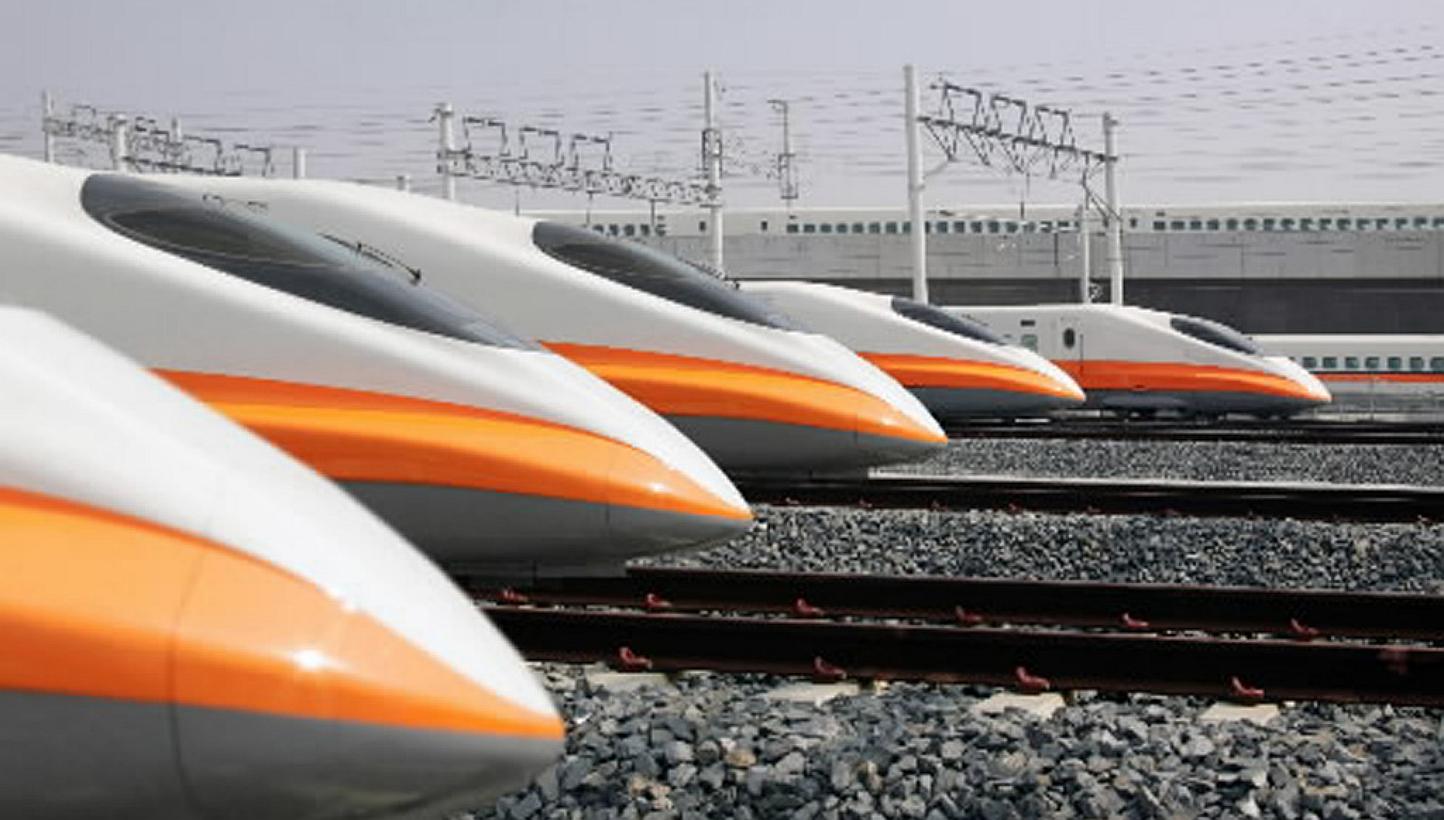Tomoo Kikuchi And Takehiro Masutomo, For The Straits Times
The politics and costs of high-speed rail project
Sign up now: Get ST's newsletters delivered to your inbox

Taiwan’s 700T Series passenger trains, based on Japan’s Shinkansen 700 Series, in Kaohsiung. A cross-border mega infrastructure project such as the Kuala Lumpur-Singapore High-Speed Rail will succeed only if it successfully integrates two countries. It must serve the people and have their support. -- PHOTO: BLOOMBERG
Tomoo Kikuchi And Takehiro Masutomo For The Straits Times
HERE'S a note of caution about highspeed rail (HSR) projects.
The one planned for Kuala Lumpur and Singapore, and estimated to cost $14.9 billion, has been hailed by Malaysian Prime Minister Najib Razak and his Singapore counterpart Lee Hsien Loong as a "game-changer". The two prime ministers gave the green light to South-east Asia's first HSR project two years ago. Once operational, the 300kmh train service will significantly reduce travelling time between the two capitals to 90 minutes, shorter than that of even low-cost air carriers.
The tender process is expected to take one year, the design another year and the construction five years, with completion beyond 2020. Experts foresee that the track will be mostly elevated in Malaysia, and potentially built underground in Singapore.
The bidding will inevitably be political, with Japanese and Chinese consortiums among those vying for the project. Japan wants to make it the first successful export of a full Shinkansen, or highspeed rail network, following its partial involvement in Taiwan's HSR. Japan's main selling point is safety, which has been underscored by the country's "no fatal accident" record for more than half a century. Japan additionally stresses that the train operation should be frequent and punctual to maximise the convenience of an HSR.
According to people familiar with the project, Japan is not ready to make as many concessions financially as China. It has been estimated that China will build the HSR not only at half the cost but also faster.
Meanwhile, China has maintained a low-key stance following its failed bid for Mexico's HSR project. Last November, Mexican President Enrique Pena Nieto abruptly cancelled a contract awarded to a Chinese consortium to build the HSR to avoid "any doubts about the legitimacy and transparency".
China, however, has successfully extended its HSR across the country, connecting all the populous cities despite the 2011 fatal Wenzhou accident.
China views this project and other initiatives from a wider geopolitical perspective. In 2013, China's leading railway manufacturer, China South Locomotive and Rolling Stock Corporation, started to build a manufacturing and maintenance centre for the Asean market in Batu Gajah, Malaysia. The Kuala Lumpur-Singapore link is part of a wider rail blueprint, which stretches from Kunming, China, all the way to Singapore via Laos, Cambodia, Thailand and Malaysia.
Financing the HSR project will be the largest challenge. Vietnam, Indonesia and Thailand gave up HSRs mainly over financial concerns, and even the United States is divided over its necessity.
Currently there is scant information about how the Kuala Lumpur-Singapore HSR will be financed, but observers expect a form of public-private partnership (PPP), which aims to reduce the governments' fiscal burden and enhance efficiency with private- sector participation.
An example would be the Taiwan HSR, one of the largest build-operate-transfer projects involving a PPP to date. The operating company almost went bankrupt recently, even though it has constantly yielded operational profits. Prior to the opening of the Taiwan HSR in 2007, the local authority estimated 300,000 passengers per day, assuming the gross domestic product would continue to grow at 6 per cent annually. Financial arrangements were made accordingly, with an interest rate higher than the market rate. The actual number turned out to be 42,000, and stands at 130,000 today.
Given the 7.1 million population of Kuala Lumpur and Singapore combined, which is roughly 40 per cent of the population of cities along the Taiwan HSR, Malaysia's Land Public Transport Commission's claim of 66,000 passengers daily (24 million annually) may be reasonable but needs to be treated with caution. Most of the Kuala Lumpur-Singapore transit stations, based on the current masterplan, are located away from the city centre. Moreover, the terminal in Kuala Lumpur will not be KL Sentral, and at the Singapore end, the terminal will be in Jurong East and not downtown.
A cross-border mega infrastructure project such as the Kuala Lumpur-Singapore HSR will succeed only if it successfully integrates two countries. Therefore, it must serve the people and requires their strong support, especially when local taxpayers are increasingly becoming more cost-sensitive.
A potential bottleneck is political risk. For example, Manila airport has delayed the opening of its Terminal 3 several times while the government is bogged down in legal battles, red tape and arbitration cases. Even in Malaysia and Singapore, political uncertainty is rising as the long-time ruling parties, the United Malays National Organisation and the People's Action Party, face greater challenges from the opposition. The two governments must do everything to ensure that the project does not just generate a windfall benefit for construction firms and developers, and that the people ultimately share both the benefits and costs of the project.
Since its independence in 1965, Singapore has sought to become "a hub of everything" so as to thrive economically. Perhaps it is fitting at this juncture to envision Malaysia as its integrative partner, for as PM Lee pointed out in Kuala Lumpur last month: "If Malaysia does well, then both Singapore and Malaysia will prosper."
The Kuala Lumpur-Singapore HSR is not just a railway project; it must be a role model for transforming Asean into a region with free movement of skilled labour and people.
stopinion@sph.com.sg
Tomoo Kikuchi is Senior Research Fellow and Takehiro Masutomo is Research Associate at the Centre on Asia and Globalisation, Lee Kuan Yew School of Public Policy.

